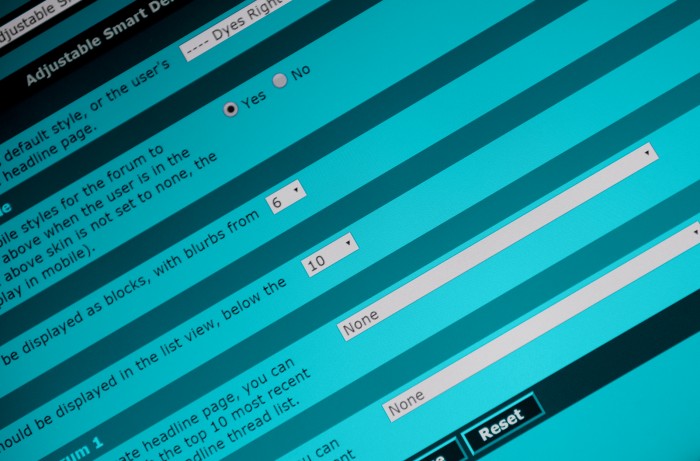The Impending Eclipse of the Stand Alone Mobile App
No, Apps Aren’t Dead
First things first, this is not an argument claiming that stand alone mobile apps are going extinct. With that said, many of potential use cases for stand alone mobile apps are being overshadowed by ease of implementation, lower cost and growing capabilities provided by web pages in mobile browsers. In this article explore what is contributing to this transition and what it can mean for your business.
The Over Prescription of Standalone Apps
Following the viral like success of the iPhone’s App Store, as well as its Android competitor/counter part, mobile applications became a hot ticket item for both developers and business owners. As the market exploded, many business owners presumed they needed an App to remain relevant in their niche and moved to pursue these ends. The trouble was that many of the folks hopping on the bandwagon didn’t necessarily have an idea for the unique service the app would perform. Questions to the extent of “about how much for a Company-X App?” would arise which, beyond being impossible to answer on account of vagueness also speaks to the potentially costly nature of trends. A lot of companies end up paying significant fees for what amounts to a brochure that the end user has to download from an app store when a web page could meet the same needs at a lower cost to the business and lower barrier of entry to the user.
Standalone mobile apps as strict marketing tools certainly have their benefits; less so now that the hype and glamour around them has but they can still function as an e-blast campaign on steroids assuming correct implementation. The difficulty lies in encouraging and maintaining usage of this application which, at the end of the day, isn’t doing much to make the users life significantly easier or more enjoyable.
App Usage
There are a lot of exciting statistics that highlight the amount of time and money mobile users spend within standalone apps, and it is entirely sensible to want to take a bite of these numbers with your digital marketing campaign. However, many people make the mistake assuming they need to build and market their own app to achieve these ends. Consider: according to a 2015 GoGlobal study, mobile apps accounted for more than 50% of all time spent on digital media; however your typical Mobile User only utilizes three to five standalone applications on a regular basis. Once you take into account that social networks such as Facebook or Instagram, financial hubs for stocks and banking, as well as hopelessly addicting games like Clash of Clans or Words With Friends are occupying this pedestal, it is easier to appreciate the potentially prohibiting costs of making an impact with your own App.
Diminishing Hype
A lot of Mobile Applications have a very limited duration of usefulness. They may be tailored to a specific event or location but will typically just clutter the users home screen once this window of relevance has shut. Combined with the hassle of finding, downloading, authorizing and learning the interface, users are liable to skip the experience all together. These hurdles were transparent when the sheer notion of having your own app provided enough novelty for the user to rush into their device’s download gateway. However, now that the app has become more commonplace and the excitement has quelled, igniting this chain of events will become increasingly difficult.
Barrier of Entry
To put it bluntly, most standalone mobile apps are not useful enough to justify their barrier of entry. All too often, the minor convenience of a digital map or schedule for an event just isn’t worth the time of acquiring the content when it is within a Mobile App. Interestingly enough, in situations where a standalone app is overkill for the services it provides, a well built mobile site will often meet the requirements at less cost and risk to you, as well as greater accessibility to the end user.
Improving Browser Technology
Mobile browsers are quickly evolving to allow web pages to offer the same capabilities that were previously reserved to standalone applications. All of the touch gesture and interaction methods that you use in dedicated standalone apps are available on a mobile web page (because it’s parent browser is in fact a dedicated app). Very recently (as of Q1 2016), browsers have even started supporting push notifications; desktop versions have already adopted the feature while mobile devices are expected to follow shortly. This continually improving browser technology means that many of the simpler stand alone mobile applications can be replaced with webpages, and accessed by punching in a URL. This is particularly ergonomic when you are able to get a hold of a short and catchy domain, such as what we have done with SetTim.es (you can read more about the SetTim.es mobile festival schedule here).
Cross System Compatibility
The beauty of a web page, both on mobile and desktop devices, is it’s near-immediate compatibility across operating systems. If the requirements of your application are not too far reaching or demanding of computational resources, the web (that is, websites that take the place of a standalone app) is fast proving to be the foundation of choice. When you step back and consider that many people still opt to use the Facebook mobile site over their standalone application and that Google has nearly reproduced Microsoft Excel in a browser (albeit, mobile support for this web app is still pending), you may begin to appreciate the range and flexibility that a fully responsive web application can offer.
Lower Cost, Quicker To Access
Essentially, the mobile browsers are continuing to provide features that make them an attractive platform for offering services you probably thought required a dedicated app. A web based solution can often go live faster than developing a standalone app, and is particularly useful for services that would otherwise be offered in ‘throw away apps’; in other words, apps that have a limited window of relevance such as solutions for event based content. At the end of the day, building your service for use in a mobile browser can provide a less expensive solution for your business that will see just as much, if not more use from your target audience.




